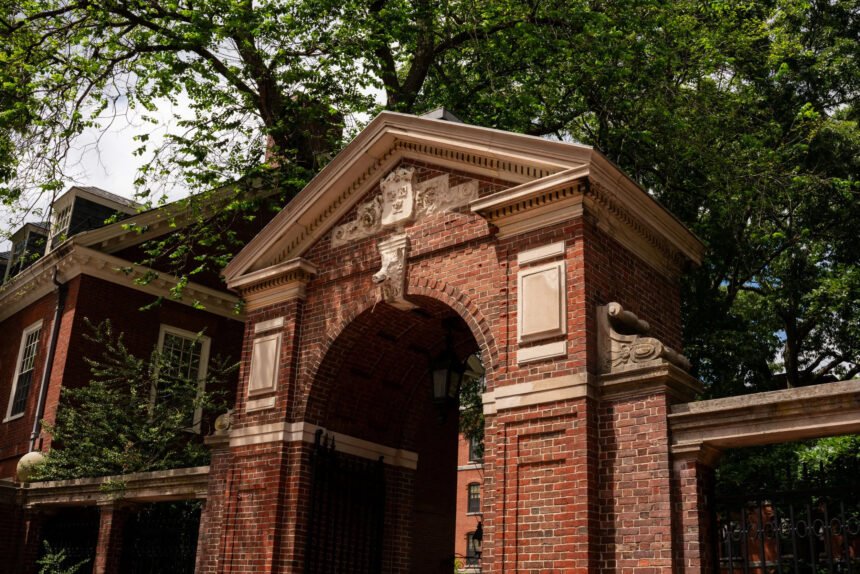Washington lawmakers and the Trump administration passed a major legislative package this summer that will cut funding for programs that help students from low-income backgrounds — making it far harder for these students to afford and complete college.
The leaders behind these cuts claim that they’re necessary to curb wasteful spending and keep higher education accountable. But that line of thinking is woefully misguided — and destructive — for our entire nation.
These changes will make higher education even more exclusive. And House Republicans just released a budget proposal that would further cut funding.
These policymakers are in effect turning our higher education system into a gated community for the wealthy. If they continue course, millions of young people will lose the opportunity to earn a college degree and build a more financially secure future for themselves and their families. And our workforce will be starved of much-needed qualified employees, choking our nation’s economy.
We can’t let that happen. It is time to invest in a nimble, adaptable and educated population.
Related: Interested in innovations in higher education? Subscribe to our free biweekly higher education newsletter.
It’s important to recognize that even without a single change from Washington, students from low-income backgrounds are already struggling to access and complete college. The gaps in college attendance and completion by family income are both persistent and wide.
That’s partly because of eroding investment in the programs that help the most. Take the Pell Grant program, for example, which provides crucial aid to more than 6 million students each year. At its peak in the 1970s, the maximum Pell Grant covered more than 75 percent of the cost of attending a four-year public college. It now covers less than 30 percent.
On average, students who receive a federal Pell Grant — overwhelmingly from families with incomes below $40,000 — still have almost $10,000 of unmet need. That gap requires so many hours of work to close that it’s nearly impossible for these students to complete college on time.
Federal policymakers could choose to spend their energy addressing these challenges. Instead, they’re putting college out of reach for students who come from poor families.
A closer look at the recently passed reconciliation package, or so-called One Big Beautiful Bill Act, makes clear that it will imperil the Pell program, raise the costs of student loan repayment, make debt costlier and riskier and push some students to forgo college altogether.
All in all, the package cuts $300 billion of federal support for higher education students and borrowers. More specifically, it opens the door for more high-cost and low-quality short-term programs to participate in the Pell Grant program, endangering the program’s financial stability.
It also eliminates longstanding federal loan plans and replaces them with a system that will fuel unpredictable spikes in loan payment amounts. Many low-income borrowers will likely pay more under their new repayment terms than with their existing income-driven repayment (IDR) plans.
And that’s for the borrowers who still get federal loans. New limits will push many students into private debt with fewer protections — and higher costs for students and their families. As a result, prospective students may see loans as too risky and decide against college.
On top of that, the legislative package slashed Medicaid and SNAP benefits. Now, millions of college students are at risk of losing access to health care and affordable food — making it far more difficult for them to complete degree programs. This, too, may push many students to jump straight into the workforce so they can start generating income — sacrificing long-term earnings for short-term necessities.
Meanwhile, many state policymakers — who are now expecting less federal support — are scrambling to reconfigure budgets. That could result in less funding for higher education — which has historically been cut when state budgets get squeezed.
In the meantime, President Trump and House Republicans want to double down on policies that will keep students from low-income backgrounds out of college. The president’s FY26 budget and the House’s latest budget proposal suggest entirely eliminating Federal Supplemental Educational Opportunity Grants — which help students from low-income backgrounds fill the gaps when the Pell Grant and other grant aid do not cover the total cost of attendance.
The proposals would also cut CCAMPIS — campus-based child care services that mainly serve students from low-income backgrounds. Today, about one in five undergraduate students is a parent.
The proposed cuts also further threaten the Fund for the Improvement of Postsecondary Education (FIPSE) which helps find strategies to get more students to complete college. These programs could be improved, but slashing them drives up debt and drives down college enrollment.
Related: Schools confront a new reality: They can’t count on federal money
There’s no question: These changes will be disastrous for the American Dream. Research consistently shows that a college degree is the No. 1 driver of economic mobility. Reduced access to college means trapping millions of people in poverty.
It also means ravaging our nation’s economy. If young people don’t enroll in college now, our country will soon face severe shortages of teachers, nurses, manufacturers and IT professionals.
With AI and technological change poised to fundamentally alter the labor market, we cannot simply hope that the next generation will be able to get by with more long-term debt, less knowledge and fewer skills than the previous one.
It’s unfathomable that Washington is making a higher education system that already favors the wealthy even more exclusive. We need to change our trajectory — and fast.
Sameer Gadkaree is president and CEO of The Institute for College Access & Success. Denise Forte is the president and CEO at EdTrust.
Contact the opinion editor at opinion@hechingerreport.org.
This story about education budget cuts was produced by The Hechinger Report, a nonprofit, independent news organization focused on inequality and innovation in education. Sign up for Hechinger’s weekly newsletter.







